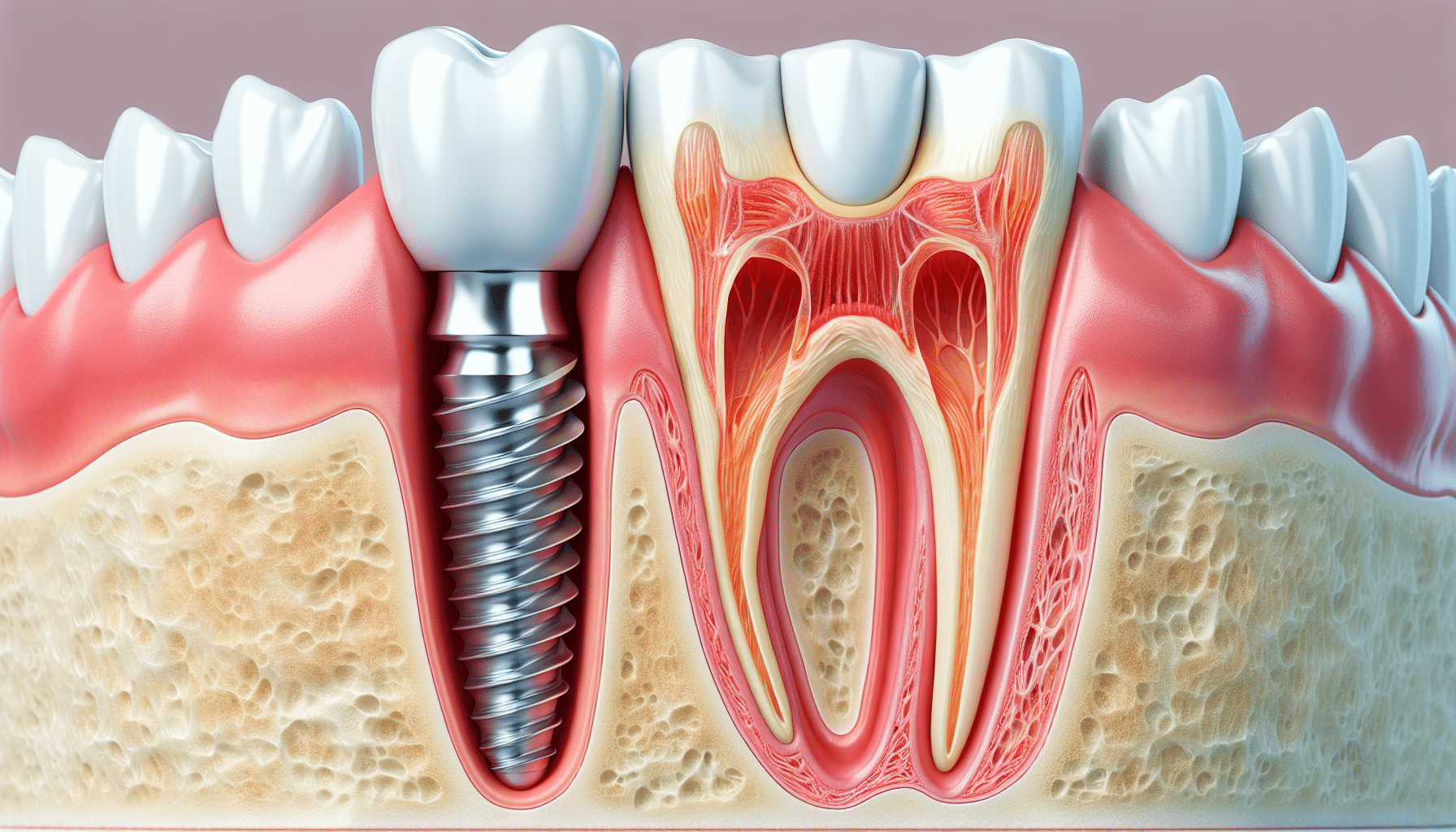Dental Sense Things To Know Before You Get This
Dental Sense Things To Know Before You Get This
Blog Article
Not known Details About Dental Sense
Table of ContentsThe Greatest Guide To Dental SenseSome Of Dental SenseThe Best Strategy To Use For Dental SenseThe Best Strategy To Use For Dental Sense
are clinical devices surgically dental implanted into the jaw to recover an individual's ability to chew or their look. They provide assistance for fabricated (phony) teeth, such as crowns, bridges, or dentures. When a tooth is shed because of injury or condition, an individual can experience difficulties such as fast bone loss, malfunctioning speech, or changes to eating patterns that result in pain.Dental dental implant systems consist of a dental implant body and oral implant joint and may additionally consist of an abutment fixation screw. Wisdom tooth cavity. The dental implant body is surgically inserted in the jawbone instead of the tooth's root. The oral implant joint is usually affixed to the implant body by the abutment addiction screw and expands with gum tissues into the mouth to sustain the affixed man-made teeth
(https://www.storeboard.com/dentalsense)Structure of The Oral Implant System selecting oral implants, talk to your oral service provider regarding the potential benefits and risks, and whether you are a candidate for the treatment. Points to consider: Your general wellness is an important consider establishing whether you are a great prospect for oral implants, how much time it will take to heal, and the length of time the implant might remain in area.
Smoking might affect the recovery process and lower the lasting success of the dental implant. The recovery process for the dental implant body might take a number of months or longer, throughout which time you typically have a temporary abutment in area of the tooth. the dental implant procedure: Carefully comply with the oral hygiene instructions offered to you by your dental company.
What Does Dental Sense Mean?
Implant failing can result in the requirement for another surgery to fix or change the dental implant system. Recovers the ability to chew Recovers aesthetic appearance Helps maintain the jawbone from diminishing because of bone loss Maintains the health of the bordering bone and gums Helps keep surrounding (nearby) teeth stable Boosts high quality of life Damages to surrounding all-natural teeth throughout implant placement Injury to the surrounding tissues during surgery, such as sinus opening Injury throughout surgical treatment (for instance, crack of surrounding jawbone) Inadequate feature, such as seeming like the teeth do not attack with each other usually A feeling that the tooth is loosened or turning in area resulting from a joint screw loosening up Implant body failing (looseness of the implant body) as a result of systemic infection, which might be more probable in clients with uncontrolled diabetes because of regional infection in bone and periodontals sustaining the dental implant body because of postponed recovery, which might be a lot more most likely in people who smoke Difficulty cleaning up the periodontals around the implant, leading to bad dental health Unattended gum disease Post-surgical pins and needles due to nerve impingement or damage Constantly inform healthcare suppliers and imaging technicians that you have oral implants before any type of magnetic vibration imaging (MRI) or x-ray procedures.
FDA is not familiar with any kind of adverse occasions reported for MRI or x-ray treatments with dental implants. Dental implants systems are commonly constructed from products that adhere to international consensus requirements of the International Company for Standardization (ISO) or ASTM International. These criteria have details of what makes a secure product.

An oral implant is a structure that replaces a missing out on tooth. With screw-like gadgets, the specialist inserts an implant right into the jawbone, and it acts as an anchor for a man-made tooth, called a crown.
The Ultimate Guide To Dental Sense
Some people are not eligible for oral implant surgery. It is for oral specialists to operate individuals with: acute illnessuncontrollable metabolic diseasebone or soft cells disease or infectionIf these issues are resolved, a person can have the surgical treatment. In, dental cosmetic surgeons refrain from operating individuals with: If individuals with any one of the above undergo dental implant surgery, there is a greater danger of the implant falling short.

Dental implant surgical treatment is a personalized process. Provide you time to recover. Attach the post and final crown, bridge or denture.
Next, your doctor will thoroughly place the oral implant into your jaw. Your doctor will certainly reposition your gums and close the laceration with navigate to these guys stitches. If your dental implant is near the front of your mouth, your dental practitioner will certainly make a short-term tooth for you to wear until you recover. That way, you won't have a gap in your smile while you recuperate.
About Dental Sense
Your provider can tell you what to expect in your scenario. During the recovery phase, your jawbone ought to fuse to the dental implant. This procedure, called osseointegration, is vital for security and long-term success. This process can take anywhere from 3 to nine months. In some situations, it might take much longer.
When your dental implant heals, your dental practitioner can affix the abutment (tiny port message) and your final restoration (crown, bridge or denture). This generally takes regarding one hour to finish and might need a second small surgical treatment. You should not really feel any discomfort during your oral implant procedure because your service provider will make use of medication to numb your periodontals.
Report this page